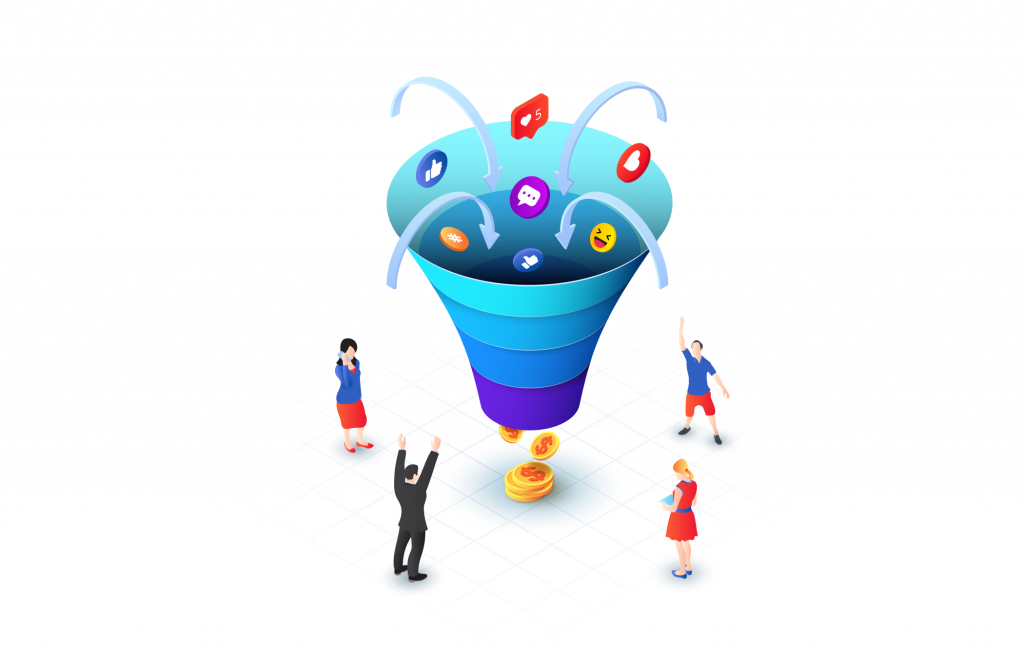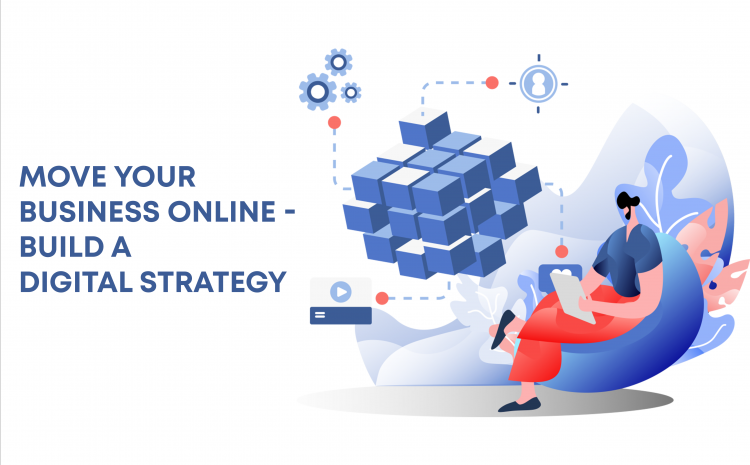How to build a digital marketing strategy?
Gone are the days when billboards, newspapers, and traditional advertising channels were the most effective way to promote business and reach consumers. Nowadays, the hectic daily life makes the digital space – the place where “everything” happens – sharing news, analyzing information, shopping, communication, etc. That is what makes digital marketing a must for any online business.
One of the main characteristics of e-commerce is the rapidly changing environment. Dealing with it sometimes leads to a shift of focus from the main goals. Here comes the need for a flexible digital strategy to the market needs and the environment.
In this article, we will answer the question, “How to build a strategy from scratch which will help you achieve your goals?”. But first, let see what exactly a digital marketing strategy is.
What is a marketing strategy?
The digital marketing strategy determines how the business will achieve its short, medium, and long-term business goals using digital channels. It includes the following components:
- Identifying consumer issues that the company solve;
- Defining key measurable indicators;
- Defining audiences;
- Selecting channels to reach the target audience and tactics for attracting them;
- Analysis of the achieved results and optimization.
In the following lines, we will go through a breakdown of each point, how and what it includes, and how they all work together to help each business build its digital plan step by step.
Step one is to determine what is the current state of the market and your competitors. How do they communicate with their customers, which are their advantages, what channels do they use, where do they advertise?
In our article dedicated to marketing research, you can find tools to explore various elements in the digital environment – https://beluga.software/bg/migraciq-na-biznesa-ot-onlain-kum-oflain-marketingovo-prouchvane/.
Once you have analyzed the business environment, you can identify your strengths, weaknesses, opportunities, and risks facing your business (SWOT analysis). That will help you to focus your communication on the things which make you different (strengths) and give you an idea of what you need to work on (weaknesses).
Step two is to identify your audience. Who are your users; where they live; what they do daily; what their marital status is; how and where can you find them; what their problems are, and how could you solve them by providing your products and services, what are their interests and behavior in digital? It is the answer to the question, “Why would they buy your products/services?” that will lead you to find points of reference for your communication and presentation of the product/service.
Creating a buyer persona will be of great help here. That is summarized information of your target audience and will help you choose the channels through which to reach them. There are many templates you can use for guidance on the Internet to create one.
Once you’ve analyzed the environment and determined what your audience is, it’s time to decide what your goals are?
Goals must be clear and measurable. What does this mean?
If your goal is to increase brand awareness, consider the key metrics you’ll be tracking – impressions, interactions with your business accounts, clicks, reactions, comments, recommendations, and more.
If you want to increase sales, you will probably track indicators as – add to cart, completed orders, incomplete orders, return on investment, etc.
You have to choose indicators that give you a clear idea of what you are spending on and to help you determine for what period you want to achieve specific results.
The three steps outlined above provide the basis for planning and preparing an action plan. Here comes the time to choose channels, create tactics to reach users.
Channel selection
Channels are usually divided into three types – owned, earned, and paid.
Owned channels are – your website, blog, social media pages, app, etc.
Earned are those places where your business is mentioned. These can be forums, foreign blogs, and articles, posts.
And the paid ones are those you pay for to show up – here are all kinds of advertising and sponsored activities.
The choice of creating your channels depends on where your users spend their time browsing the Internet. Here, of course, it is determined what kind of content you publish – videos, articles, posts, photos, stories, podcasts, infographics, product publications.
When choosing channels and content, you don’t always have to be guided by the question, “Where will I sell the most?”. There are many places where you can provide more information to your customers. Here is the moment when we will talk about the marketing funnel.

The marketing funnel is a concept consisting of several different steps that buyers go through to purchase a product or develop brand loyalty. Depending on the type of products and services, the funnel may have a different number of steps but usually includes the following:
- Discovering
The step of discovering is when users hear, understand, or get acquainted with your brand or product. Sometimes it’s the moment of realizing the need for a solution. It is essential to remember that here consumers do not know that you or your product exists. Here you need to make an effort to reach them and explain who you are and what you do.
- Research/Consideration
That is the step where the user clarifies his problem and explores the possibilities to deal with it. Here they actively research, read and choose a solution and where to buy it?
- Purchase
This stage starts from researching online stores through comparing prices and terms of purchase to its completion and delivery.
- Loyalty
The last stage includes all the efforts of the brands to turn their consumers into loyal customers. Good ideas for this step are organizing events to present new products or related services, providing special offers, and more.
Let’s give an example to illustrate the concept: A user looks at what’s new on Facebook. He sees a friend who shared in a story a photo of him riding a bicycle. The user decides that he wants to diversify his daily life by being more active than usual. That is the Discovering step. In our example, the person realizes his need to start a more active lifestyle. Here, of course, instead of seeing the story of a friend, he can see an advertisement for a brand, read an article “How do I start playing more sports?”, and so on, with which he realizes his need.
He starts looking for different ways to solve his problem (I’m not an active person, I want to be). Here begins stage 2 – Research. Read various articles on how to play more sports. Eventually, he decided to buy a bicycle to travel to his workplace every day and ride it in his free time. He begins to research what bike it would be good to buy. Here he can:
- Find an article – How to choose a bike?
- See infographics on social networks with the pros and cons of a particular type of bike.
- Go to YouTube and search for videos with reviews of certain products and testing.
- Post in a group or forum to seeks advice, opinions, and recommendations.
Once he decides what he needs, he starts looking for where to buy it. He goes to Google and searches “bikes”. Here he looks at different stores and offers, reads the descriptions of the products, compares prices, looks for free delivery and how long it will take, and finally decides to buy from store “X”. That is the “Purchase” stage. This process sometimes takes days, weeks, or even months, depending on the complexity of the product. Remarketing also helps here – showing the products to customers who have viewed them. It is a great way to stay visible to the customer, as there is a possibility that once he leaves your store, he will never meet or look for you again.
The last stage – Loyalty, can be developed by providing helpful information to our customers’ emails on “How to extend the life of your bike?”, “5 mandatory steps in the maintenance of our bike”, etc. Another possibility is to organize an event/competition with the provision of an appropriate prize. Simply put, this stage should make an impact around your brand that comes from satisfied customers, make them recommend you, and feel like part of something bigger.
The overall idea of the funnel is that the more users enter it, the more they will exit at the last stage.
Think about what content you could create, what advertising to include in each stage, and what would be interesting for them – articles, infographics, videos, podcasts, e-books, posts, etc. In many cases, in stage 2 of the funnel, based on their research, consumers choose the company from which to buy only because of the detailed information provided by them and the trust they inspire.
Tactics
Once you have chosen the content type and which channels you will use, it is time to think about creative concepts and how everything will work together. Creative concepts are the way we will attract the customer – in what situation we will put him to realize his need, what emotional and rational factors we will use to make them buy, etc. Here is the place to test different approaches, messages, formats to find the one that brings you the most results.
It is also good to create order in your work. Make a posting plan, an advertising calendar, a content plan that will help you maintain your consistency and consistency.
Analysis and optimization
Analyzes in the digital activities take place daily. We can often find out very quickly what our audience likes and dislikes. In this process, we find out what works, what doesn’t, what is the return, or in other words – the place where we have to dive deep into the numbers.
Once the analysis is complete, it is time for conclusions and optimization. The things that worked, why did they work, and how do we keep moving along that line? Those that didn’t work, why didn’t they? Do we give them up completely, and do they bring us other benefits?
For example, if you start an ad to generate sales, but it does not get enough, it doesn’t always mean you have to stop it. If it drives enough quality traffic to your online store and feeds the funnel in a good way, then consider leaving it active and finding another way to convert the users brought. And do not forget to look for issues outside the activity. Look why customers are exiting the site and whether the problem is hidden elsewhere (for example – in the checkout).
Conclusion:
There is no single way to create a strategy for a business, even those that are similar in type, product, and activity. That is the reason why there are no universal templates for this activity.
Remember that the goal of the strategy is to identify what actions you will take to achieve your goals over a certain period. And its effectiveness depends on its study, daily work on it, testing, analysis, and optimization.



